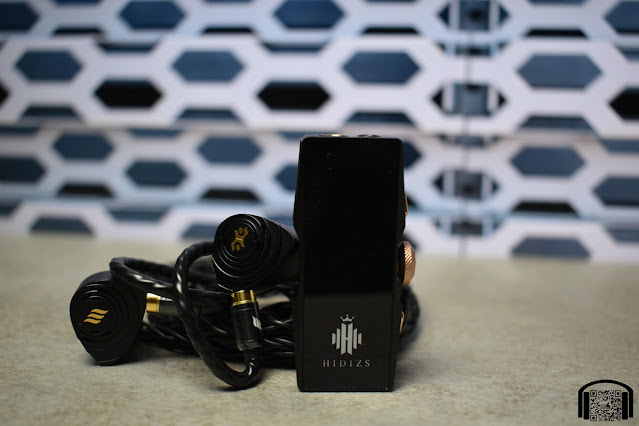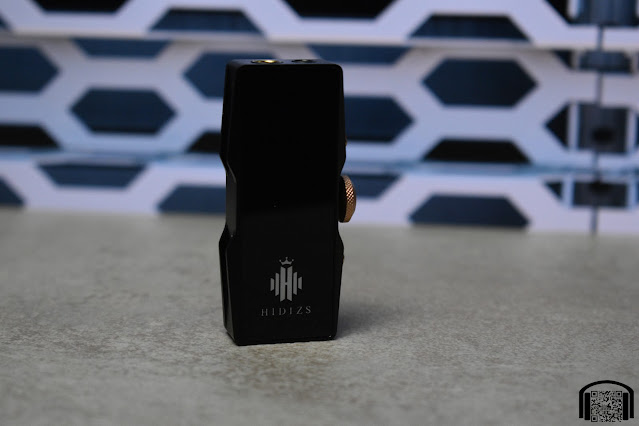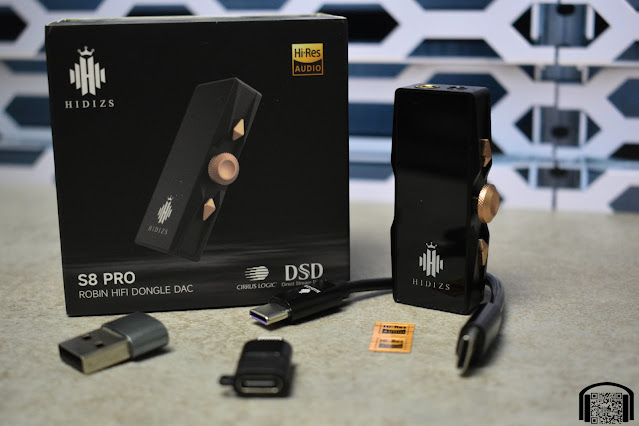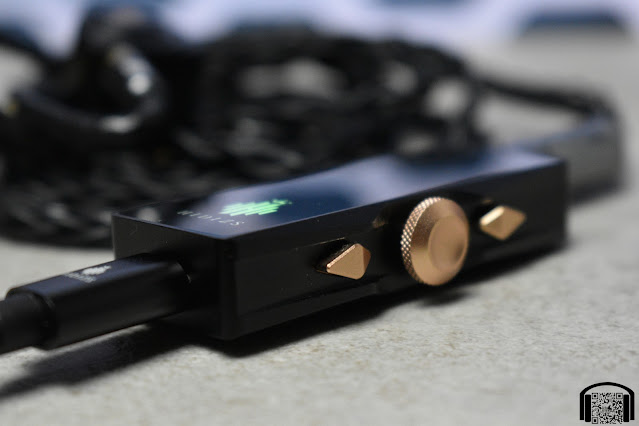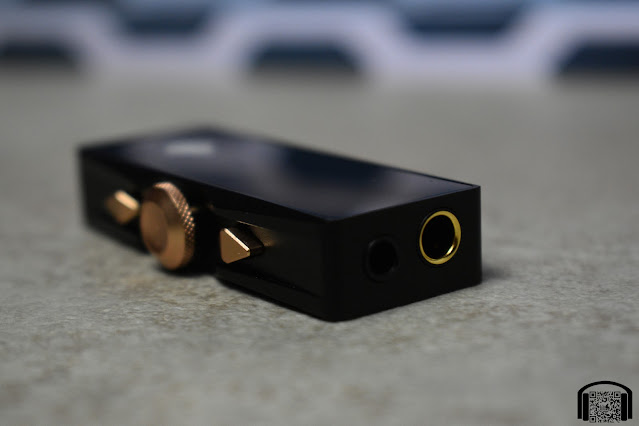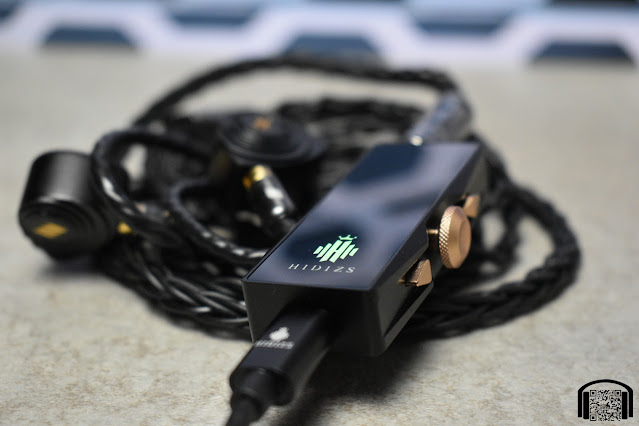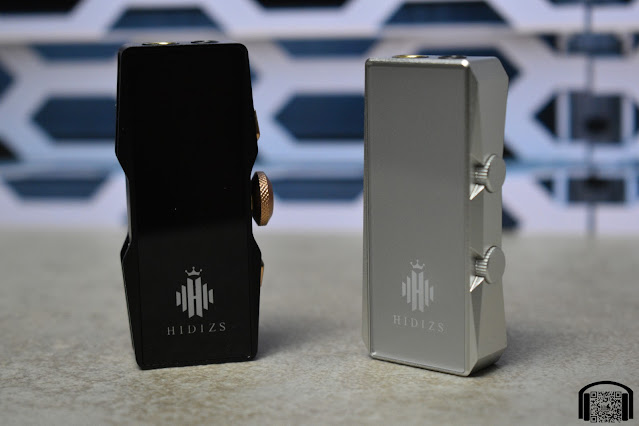TLDR version on YouTube: TDLR - Hidizs S8 Pro Robin
The S8 Pro Robin is the latest dongle released by Hidizs and has been sent to me by the company for me to try it out and to share my opinions in this review. Hidizs have not made and requests and I will be as unbiased as humanly possible, as I always try to be.
You can find the official page for the S8 Pro here: HIDIZS S8 Pro Robin HiFi Balanced Dongle DAC | Hidizs
As with all links that I share, this is a non-affiliate link.
Intro…
As I just mentioned, the S8 Pro Robin is the latest dongle DAC to be released by the company that has already made a name for itself in the dongle market. Around 6 months ago, I reviewed the S9 Pro Plus Martha, an updated version of the previous S9 Pro, which has a current price of just over 80€. The S8 Pro Robin is an update to the previous S8 and comes in at a price of around 90€, although the first 100 orders do get it at the reduced price of 60€.
So before we actually focus on the S8 Pro, let’s see what the differences are in specs between the S8 Pro and the S9 Pro Plus that is around 10€ cheaper.
The first thing that stands out is obviously the DAC chip that is used. While the S9 Pro Plus opted for an ESS chip, the S8 Pro features two CS43131 from Cirrus Logic. Of course, the DAC chip is really just a part number and it is the implementation that counts, but it is still the first thing you will notice on paper when comparing the two.
As far as power, the S9 Pro Plus claimed 138mW @32 Ohms unbalanced and 180mW @32 Ohms balanced, where the S8 Pro maintains the same claimed power output in balanced mode but the unbalanced mode is 80mW instead of the 138mW that the S9 Pro Plus offers.
While both devices can decode PCM up to 32bit/384kHz, the S8 Pro will only do up to native DSD256, where the S9 Pro Plus increases this to DSD512.
Both devices offer 6 filter modes, identified by the colour changing led logo, however, the actual filters are different implementations.
Finally, as far as specs, the S8 Pro claims distortion as low as 0.0005% (unbalanced) and 0.0006% (balanced) with an SNR of 125dB/128dB and a separation of 74dB/110dB. The S9 Pro Plus on the other hand, claims 0.0019% in unbalanced, 0.0008% in balanced, an SNR of 123dB/120dB and a separation of 75dB/115dB.
So, all of these numbers would make you wonder why you would chose the S8 Pro over the S9 Pro Plus, when the only real benefit on paper is a slightly better distortion which is well below the human hearing threshold anyway. Well, lets take a look at the S8 Pro in depth and then, if you haven’t already seen my S9 Pro Plus review, you can find that here and make a decision for yourself.
As always, specs are specs, implementation and use are the important parts.
Presentation…
There really isn’t much difference between the presentation of the S8 Pro and the S9 Pro Plus. The device is well packed inside a hard plastic box, which is covered by a cardboard sleeve showing an image of the device and the specs on the back.
Inside the box we get the dongle, a USB-C to USB-C cable, a USB-A to USB-C adapter, a Lightning to USB-C adapter (this is something that didn’t come with the S9 Pro Plus) a Hi-Res sticker and a warranty card.
Nothing really special about the packaging or the contents but it is nice to see that the adapter was included for the iOS users out there and there is really nothing we can say is missing from the contents.
Build and aesthetics…
The device is easily recognizable as a Hidizs dongle, yet they have made some changes to the aesthetics in comparison to previous models, which I think look pretty good.
The black aluminium frame sports two glass panels (plexiglass) which are also black and feature the Hidizs logo on the front, which illuminates and changes colour depending on filter and playback format.
One on side of the device there are 3 copper coloured buttons, the top and bottom ones being shaped like diamonds, while the centre one is shaped like a wheel that stands out from the body.
While these buttons look very elegant in their design, I feel that the middle button is at risk of being damaged. I say this because it looks like it is a volume wheel, yet it is only a push button, and if you try to turn it, as anyone picking up this device for the first time probably will, then there is a little flex to it and I think that someone trying to turn it with a little too much strength may either snap the shaft or cause damage to the inside. It is not that I have damaged it, nor can I guarantee it will get damaged, maybe I am over thinking it, but it does give me that impression.
In general I think that the device looks very elegant is is well built, although I would have liked that center button to be a knob/wheel rather than just a button. That way they could have skipped the other two buttons. This is not a complaint, just an observation from my point of view.
Functionality…
Although there is no user manual included with the S8 Pro, the functionality is rather straight forwards.
You connect your headphones to either the balanced or unbalanced ports on the top of the device, you connect the USB cable from your source to the device on the bottom, and then you control the few functions it has from the side buttons.
The center button functions as a play/pause button on windows, with a double click functioning as next track on Android. I don’t know if the next track function is supposed to be present on windows but I couldn’t get it to work so I am guessing it is an Android only thing (well, maybe iOS also but I don’t have an Apple device to test with).
The other two buttons serve as volume up and down. This changes the volume output of the device itself, there is no local controlled amplification on the S8 Pro itself, just the overall software control on Android/Windows.
When pressing and holding the two volume buttons simultaneously, this changes the filter of the device and is reflected by the flashing of the logo in a different colour to inform which filter has been selected.
The filter options are:
RED - High Pass FIlter
GREEN - NOS Filter
BLUE - Deem Phasis filter
YELLOW - Fast and slow filter
PURPLE - Low latency and phase compensated filter
WHITE - Wide band flatness mode
Now, the names of some of these filters don’t really make much sense to me. I have no idea what “Deem Phasis Filter” is, I am unsure of how a filter could be both fast and slow at the same time, and I was also intrigued by the High Pass Filter, wondering at what frequency the high pass filter cuts off.
So, to satisfy my intrigue, I measured the frequency response of the S8 Pro (after already recording the video review) and found no difference in the lower frequencies between the High Pass Filter and the other filters, at least down to 20Hz. My test set up is not really adequate for measuring below 20Hz, so I can’t say at what frequency the HPF cuts off, if at all, but I don’t really see the need for this filter.
Anyway, to my ears, I seemed to prefer the NOS filter (green), so that is what I ended up sticking with after the initial playing around.
Sound…
I always say that it is difficult to judge differences between sources and that we, as reviewers, tend to have a tendency to exaggerate the minor differences to get our point across. In the case of the S8 Pro, testing side by side with the S9 Pro Plus, I think that the differences are even smaller than usual.
When switching between sources and IEMs, I would sometimes get the feeling that the S8 Pro is a little more detailed than the S9 Pro Plus, and on other occasions, I would fell that it is just a little bit warmer. Yet, these are not impressions that I found with all IEMs or even at all times, even when listening to the same track later in the day.
I would make a note in the morning that track X sounds a little warmer on the S8 Pro, then in the afternoon I would strike a line through that comment, basically because I no longer really identified that difference. Then, in the evening, I would make a note that it sounded a little brighter, only to scratch that the next morning and start again.
In general, I would say that the S8 Pro is a neutral sound signature with good detail retrieval, yet so is the S9 Pro Plus. There is much more of a noticeable difference between the original S9 Pro and the S9 Pro Plus than there is between the S8 Plus.
Basically I find the S8 Pro to be a device that performs very well and doesn’t really do anything to alter the expected presentation of the IEMs that are in use.
Conclusion…
The S8 Pro is another great little dongle from Hidizs. It may not have a huge amount of power but it is ample for the vast majority of IEMs that will be plugged into it. The performance is good and the build is good. Yes, I had a few little comments along the way but they were just comments, not complaints.
I would say that the biggest competition to the S8 Pro is the S9 Pro Plus from the same manufacturer.
As mentioned earlier in the review, I suggest you check out my review of the S9 Pro Plus and come to your own conclusion but in my book, I don’t think you can really go wrong with either of them. Both perform well and the differences in sound are far more dependent on my state of mind than huge differences in performance.
I do prefer the look of the S8 Pro personally but I would be happy to use either device.
As always, this review is available in Spanish, both on my blog (www.achoreviews.com) and on YouTube (www.youtube.com/achoreviews)
